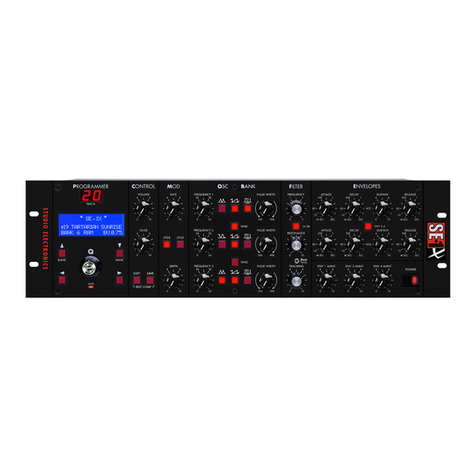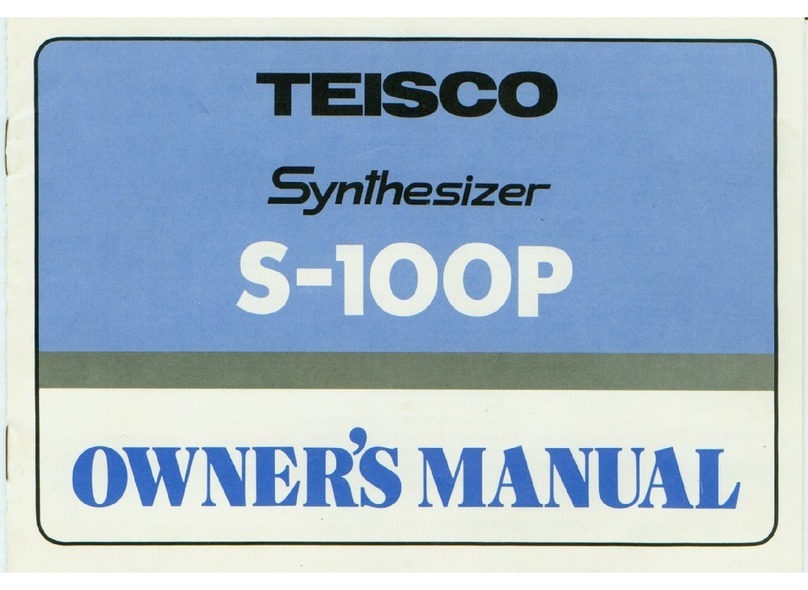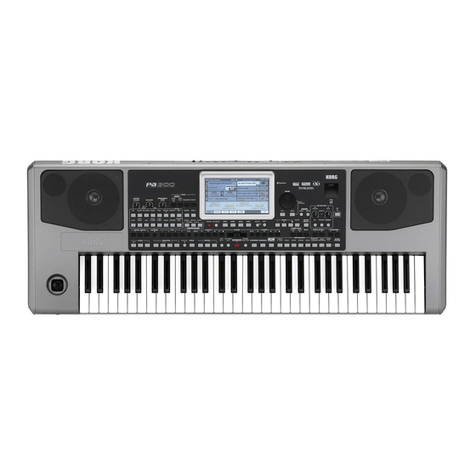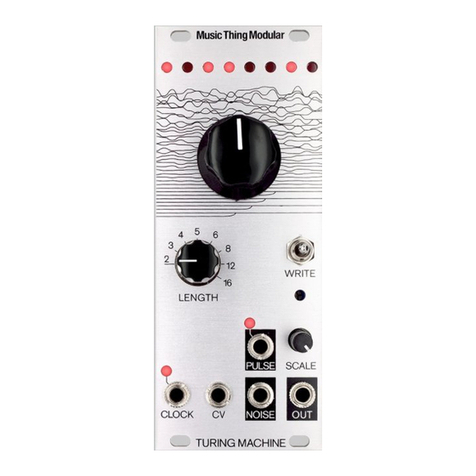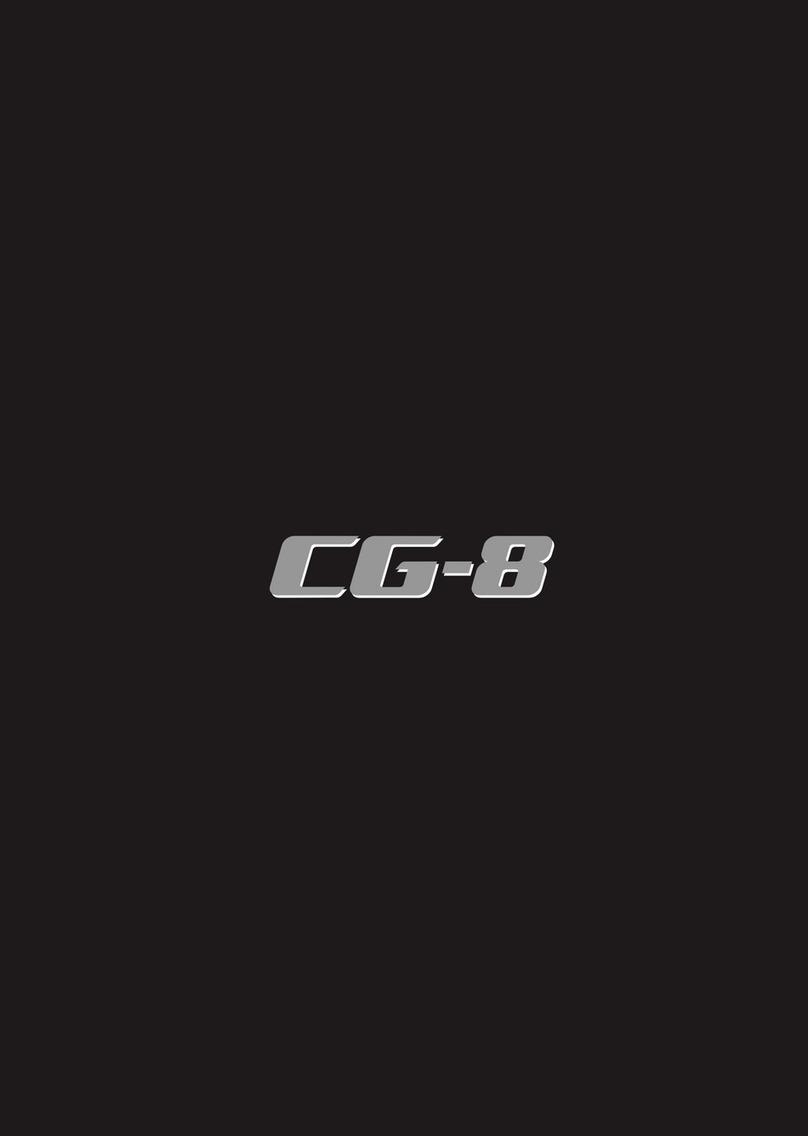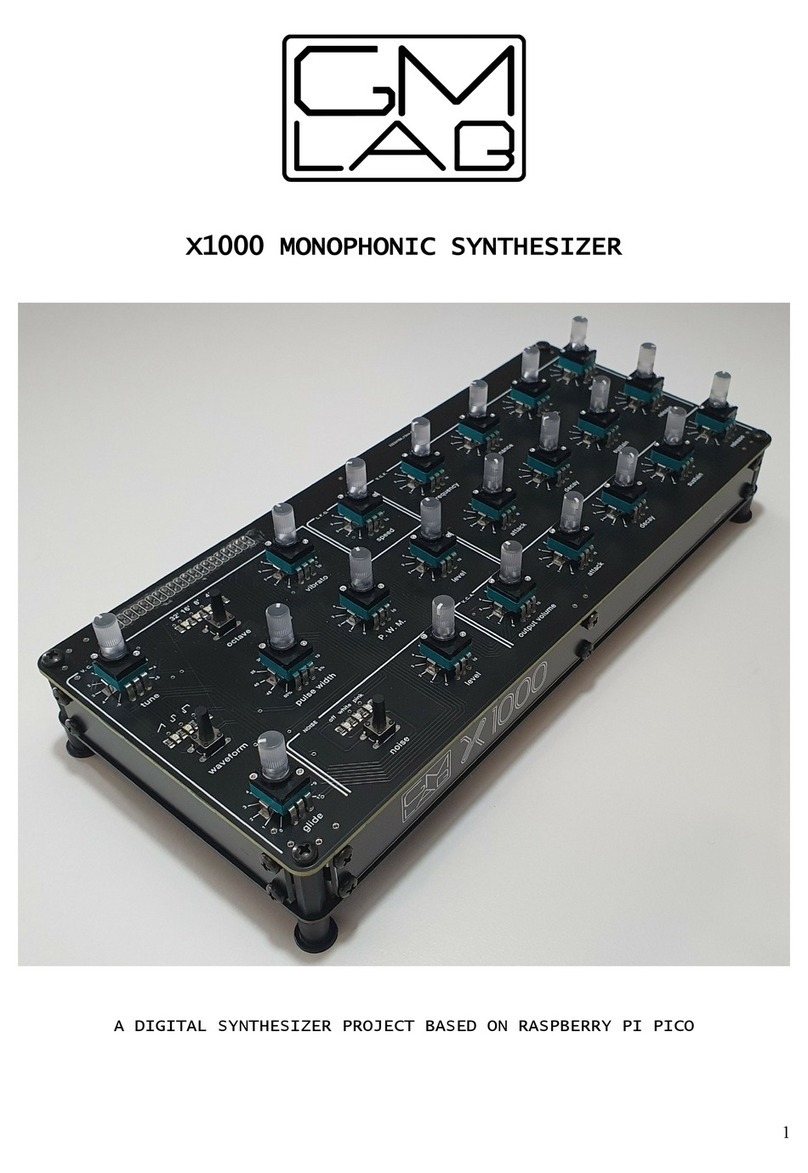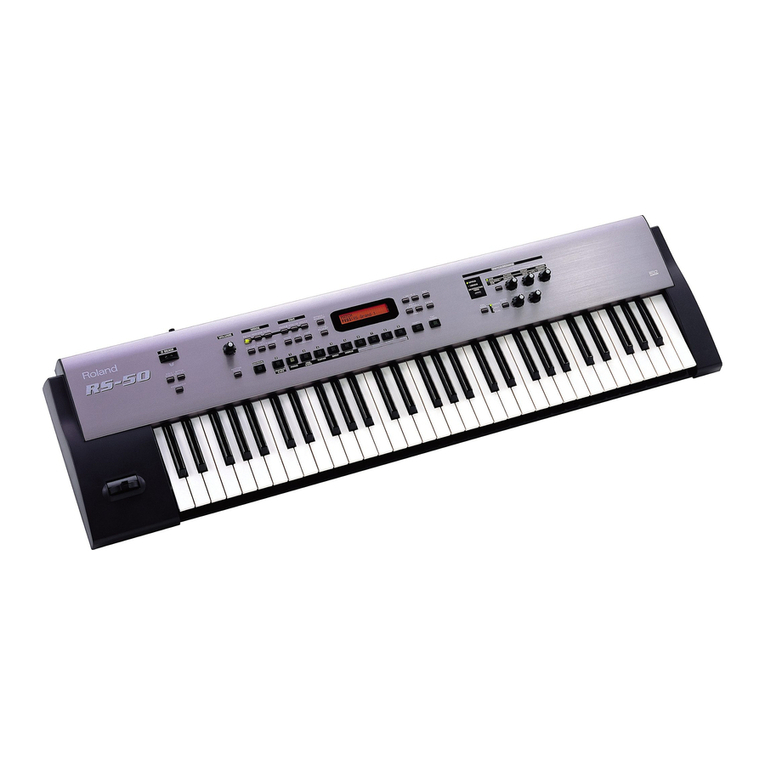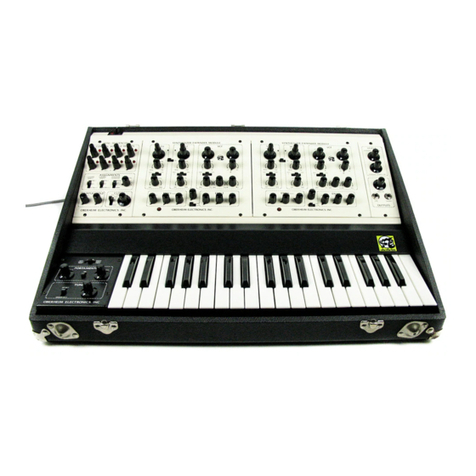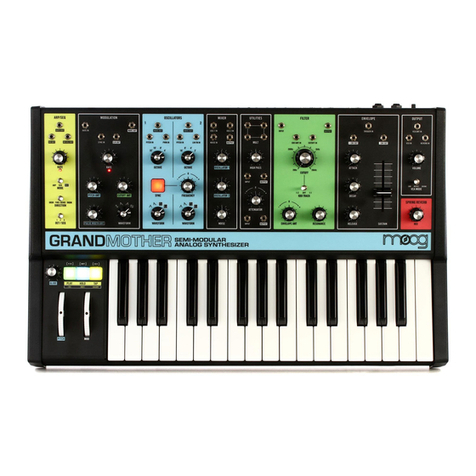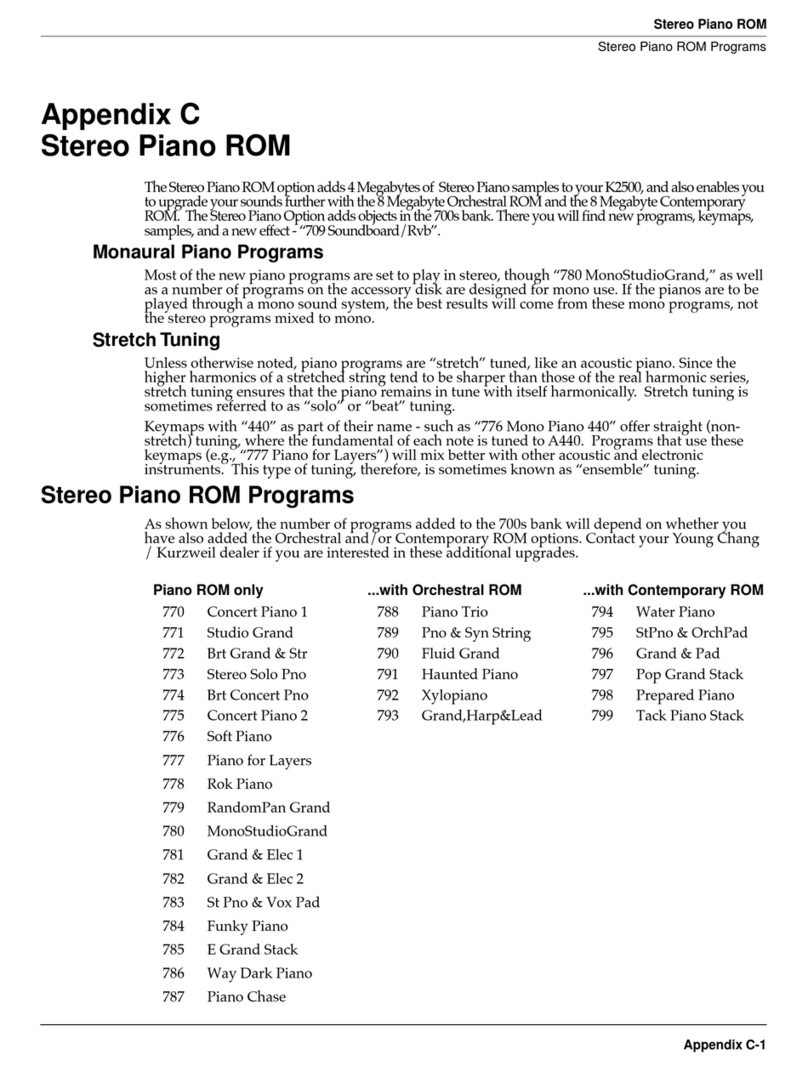Manson Engineering Industrial O-1207/URC User manual

CONTAINS
108
PAGES
TECHNICAL
MANUAL
FOR
RADIO
FREQUENCY
SYNTHESIZER
O-1207/URC
Manufactured
By
Manson
Laboratories,
Inc.
Wilton,
Connecticut
DATE:
23
March
1964
Printed
in
U.S.A.
094-903804

CONTENTS
li
mony
na
Pwo
NY
3-1
3-2
d-1
D-2
5-3
5-4
o-9
d-6
5-7
0-8
5-9
5-10
d-11
5-12
6-1
6-2
6-3
Subject
Page
Inspection
and
Identification...
1...
ee
ee
es
1-1
Description
and
Specifications
..........0
0.0.
eevee
cease
2-1
Installation
and
Operation
..........
00sec
eenvcccvene
3-1
THEOLY
i739
ahs
a
eee
he
Saws
Shae
SS
ee
SE
et
eh
oe,
eee
4-1
Se
VICES,
hop
te
Ret
Botha
cheat
he
ea
ee
ape
a
Ae
ae
aa
o-1
Parts:
Information:
s.3<44:4444-34.5
4
Reade
ee
OOS
ES
6-1
IVEOCIE
LCAUION:
sant
once,
Rig
are
ow
pe
ee
Bee
wig
Blak
ee
he
Baa
Bee
ee
7-1
Difference
Data:SheetS
2...
24 ke
Gad
eee
Pee
a
we
ole
HES
8-1
Table
Operating
Controls
and
IndicatorS...........5
00s
ee
eeee
3-2
Band:
PaACrors
sus
65-6
iace
ie
eo
e
We
OS
awe
Be
Ora
atane
BB
es
3-4
500
Ke
Locked
Divider
Tuning
Data............-.000000-
5-13
400
Ke
Locked
Divider
Tuning
Data............0500000-
5-15
Output
Amplifier
Tuning
Data...
..
0...
ee
ee
5-32
Gear
Box
Chassis
Test
Data...
.....
cc
eee
ee
ee
eens
5-37
Output
Locked
Divider
Chassis
Test
Data............4+44.
0-37
Front
I-f
Chassis
Test
Data...
..
2...
..
2.2.
eee
eee
ee
wns
5-38
Rear
I-f
Chassis
Test
Data
05.064
22
V
oe
ae
oO
Se
RS
5-39
Vfo
and
Spectrum
Generator
Chassis
Test
Data............
5-40
Reference
Chassis
Test
Data
..........
2.0.0
c
ee
evencvee
5-40
Power:
Supply
Test
Datas
¢
vic.
ee he
oa
ee
Ge ea
oe
ewe
we
eRe
5-40
Wide
Band
Amplifier
Chassis
Test
Data.................
5-41
Typical,
Froubles
qux'g-aso
seas
ce
eS
Sees
Gt
A
ee
ee
5-41
List
of
Major
Units:
sas
ae
eo
Se
ee
eg
a
ae
6-1
Maintenance
Parts
List.
.i4)6
yo
eae
ees
Se
OD
a
ee
6-2
List
of
Manufacturers
<i
4-66.
ae
Cae
es
SE
ee
Oe
we
pce
6-33

CONTENTS
(continued)
1-0
5-1
5-2
5-3
5-4
5-5
5-6
5-7
o-8
5-9
5-10
d-11
5-12
5-13
Figure
Synthesizer,
Electrical
Frequency,
0-1207/URC..........
Typical
Vfo
Tracking
Curves......
ea
ee
eae
ee
ar
Locked
Divider,
Ganged
Capacitor,
Chassis,
Schematic
Diagram
(D-216-003-001)..............
0.00
cee
eeae
Gear
Box,
Electrical
Component,
Schematic
Diagram
(D246
002-078)
6
6d)
Sick
ws
de
ew
Bo
tee
ek
nets
be
won
es
ged
wae
ee
I-f
Chassis,
Front,
Schematic
Diagram
(E-216-004-001)
....
I-f
Chassis,
Rear,
Schematic
Diagram
(C-216-005-001).....
Vfo,
Spectrum
Generator,
Ganged
Capacitor,
Chassis
Schematic
Diagram
(D-216-006-001)
...............4.
Reference
Chassis,
Schematic
Diagram
(D-216-008-001)
....
Emergency
6-vac
Oven
Supply
Schematic
Diagram
(GaZT
Se
OLASOOL)
62
con
vey
Mung
aria
Aah
hincm
ade
ee
tern
he
Bak
First
Balanced
Mixer,
Schematic
Diagram
(B-216-011-001)
..
Wideband
Amplifier,
Schematic
Diagram
(B-216-013-001)
....
Power
Supply
Chassis,
Schematic
Diagram
(C-274-009-001)
Subassembly
Location,
Top
View
..............e00008
Subassembly
Location,
Bottom
View..............0005
iii

Figure
1-0.
Synthesizer,
Electrical
Frequency,
0-1207/URC

1,
INSPECTION
AND
IDENTIFICATION
1-1.
INSPECTION.
-
If
the
equipment
is
found
damaged
upon
delivery,
request
that
an
inspection
be
made
by
the
carrier's
agents.
The
carrier's
claim
agent
will
prepare
a
report
which
should
be
sent
to
Manson
Laboratories,
Incorporated.
We
will
assist
in
providing
repair
or
replacement
to
damaged
items,
1-2.
IDENTIFICATION,
-
Include
the
equipment
type
and
serial
number
shown
on
the
front
cover
of
any
correspondence
regarding
this
equipment
and
when
ordering
parts,
The
serial
number
on
the
front
cover
must
match
the
number
that
appears
on
the
equipment,
1-1/1-2


2.
DESCRIPTION
AND
SPECIFICATIONS
2-1.
DESCRIPTION.
-
Radio
Frequency
Synthesizer
Model
274
(hereinafter
called
synthesizer")
is
a
precision
frequency
generator
that
provides
690,000
output
frequencies
with
a
stability
of
1
part
in
10°
per
day
in
the
range
of
2
to
34
mc
covered
in
four
bands:
2
to
4mc,
4to
8
mc,
8
to
16
mc,
and
16
to
34
mc.
Auxiliary
outputs
of
1
mc
and
100
ke
are
also
provided.
The
synthesizer
consists
of
a
main
variable
frequency
oscillator
(vfo)
that
is
disciplined
by
three
secondary
variable
frequency
oscillators.
All
four
oscillators
are
phase
locked
to
a
stable
(1
part
in
108),
crystal-controlled,
1-mc
reference
oscillator.
As
a
result,
the
stability
of
the
synthesizer
outputs
equals
that
of
the
reference
oscillator.
An
external
1-mec
standard
frequency
may
be
injected
to
replace
the
internal
reference
(if
an
output
stability
greater
than
1
part
in
108
per
day
is
required),
or
to
substitute
for
a
defective
internal
reference
oscillator.
Two
front-panel
jacks
allow
the
2
to
34
mc
output
frequencies
to
be
checked
against
a
frequency
counter
using
the
100-kc
auxiliary
output
of
the
synthesizer
as
the
time
base.
A
front-panel
meter
circuit
permits
monitoring
overall
synthesizer
per-
formance
and
individual
circuit
performance.
2-1

2-2,
SPECIFICATIONS
OUTPUT
FREQUENCY
Range
2
to
34
mc
in
four
bands
Bands
and
steps
2
to
4
mc
in
steps
of
12.5
cycles
4
to
8
mc
in
steps
of
25
cycles
8
to
16
mc
in
steps
of
50
cycles
16
to
34
mc
in
steps
of
100
cycles
Readout
dial
16
to
34
mc
in
steps
of
100
cycles
FREQUENCY
STABILITY
1
part
in
108
per
day
from
a
built-in
reference
standard
OUTPUT
LEVEL
Adjustable
0.1
to
2.5
vrms
OUTPUT
IMPEDANCE
50
ohms
nominal,
unbalanced
SPURIOUS
SIGNALS
Signals
non-related
to
the
output
frequencies
are
down
a
minimum
of
120
db
HARMONIC
OUTPUTS
Second
harmonic
down
a
minimum
of
40
db,
all
higher
order
harmonics
are
negligible
RESETTABILITY
ERROR
Zero
REFERENCE
FREQUENCY
LEVELS
Output
100
ke(1/10
of
internal
standard)
1
milliwatt
into
a
500-ohm
load
Output
1
mc
(internal
standard)
50
milliwatts
into
a
50-ohm
load
Input
(external
1-mc
standard)
20
milliwatts
from
a
50-ohm
load
CRYSTAL
Type
of
cut
AT
Crystal
frequency
999.967
+
cps
Oscillation
frequency
1
me
Temperature
coefficient
0.25
part/10°/deg
C
maximum
Operating
temperature
75°C
OPERATING
AMBIENT
TEMPERATURE
0
to
50°C
OPERATING
AMBIENT
HUMIDITY
0
to
95% RH
INPUT
POWER
REQUIRED
105/125
vac(pp),
50/60
cycles,
single
phase.
1.7
amperes
drawn
at
115
vac
2-2

DIMENSIONS
5-1/4"
H
x
16-1/2"
W
x
20"
D,
nominal
WEIGHT
.
80
lbs
2-3/2-4


3.
INSTALLATION
AND
OPERATION
3-1,
INSTALLATION.
~-
The
synthesizer
is
shipped
completely
assembled
and
ready
for
operation.
The
synthesizer
is
designed
to
be
mounted
in
a
standard
19-inch
rack.
To
rack
mount,
proceed
as
follows:
a.
Connect
power
cable
to
115
VAC
INPUT
jack
on
rear
of
synthesizer.
b.
To
use
the
1-mc
output
as
a
reference
Standard,
connect
output
cable
to
the
1
MC
OUTPUT
jack
on
rear
panel,
To
supply
the
synthesizer
with
an
external
1-mc
reference,
connect
the
reference
to
the
1
MC
INPUT
jack
on
the
rear
panel
and
set
the
INT-EXT
switch
to
EXT.
c.
Place
synthesizer
in
rack
and
secure
in
place.
d.
Connect
2
to
34
mc
output
cable
to
2-34
MC
jack
on
front
panel.
e.
If
desired,
connect
100-ke
output
cable
to
100
KC
OUTPUT
jack
on
front
panel.
3-2.
DESCRIPTION
OF
CONTROLS.
-
Each
control,
indicator,
and
device
used
to
operate
the
synthesizer
is
listed
in
table
3-1
with
a
description
of
its
function.
3-3.
OPERATING
PROCEDURE.
-
To
operate
the
synthesizer,
proceed
as
follows:
a,
Set
meter
selector
switch
to
INC
MON.
b,
Set
POWER
ON
switch
to
its
upper
position
if
the
oven
has
stabilized,
(Oven
is
stabilized
when
OVEN
lamp
cycles
regularly.)
The
TEST
METER
should
oscillate
for
approximately
one
minute,
then
remain
stationary,
indicating
that
delayed
B+
has
been
applied
to
the
oscillators
and
that
the
loops
are
locked.
c.
Set
BAND
switch
to
band
containing
desired
output
frequency.
Multiply
desired
output
frequency
by
band
factor
(table
3-2)
to
obtain
counter
frequency.
d.
Using
frequency
controls,
set
counter
frequency
on
counter.
Ensure
that
number
in
circular
window
is
the
same
as
corresponding
number
on
counter,
3-1

e.
Set
meter
selector
switch
to
100
KC
and
hold
PUSH
TO
OPERATE
switch
depressed,
Adjust
ZERO
ADJ
control
until
TEST
METER
reading
is
zero,
Release
PUSH
TO
OPERATE
switch.
f.
Advance
meter
selector
switch
to
10
KC
position,
TEST
METER
reading
should
be
less
than
one
volt.
ge,
Advance
meter
selector
switch
to
1
KC
position;
TEST
METER
reading
should
be
less
than
one
volt.
h.
Advance
meter
selector
switch
to
100
~
position;
TEST
METER
reading
should
be
less
than
one
volt.
i.
Set
meter
selector
switch
to
LIMITER
position;
TEST
METER
should
read
at
least
one
volt.
j.
Set
meter
selector
switch
to
RF
LEVEL
position
(vertically
downward).
Using
RF
LEVEL
control,
set
desired
output
level
on
TEST
METER.
k.
Return
meter
selector
switch
to
INC
MON
position,
and
leave
it
in
this
position
during
operation
of
the
synthesizer.
If
the
meter
starts
to
oscillate,
one
of
the
loops
has
broken
lock.
TABLE
3-1.
OPERATING
CONTROLS
AND
INDICATORS
CONTROL
OR
INDICATOR
LOCATION
FUNC
TION
POWER
ON
switch
Lower
right
Applies
line
power
to
power
supply
POWER
ON
lamp
Lower
right
Indicates
when
line
power
is
applied
to
power
supply
OVEN
lamp
Upper
left
Indicates
when
oven
is
on
BAND
switch
Lower
left
Selects
desired
band
100
KC
control
Lower
left
Selects
100-ke
steps
of
output
frequency
10
KC
control
Lower
center
Selects
10-ke
steps
of
output
frequency
1
KC
control
Lower
center
Selects
1-kc
steps
of
output
frequency
3-2

TABLE
3-1.
OPERATING
CONTROLS
AND
INDICATORS
(Continued)
CONTROL
OR
INDICATOR
LOCATION
|
Function
100
~
control
PUSH
TO
OPERATE
switch
ZERO
ADJ
control
TEST
METER
Meter
selector
switch
OFF
position
INC
MON
100
~
position
1
KC
position
10
KC
position
100
KC
position
RF
LEVEL
position
(vertically
downward)
LIMITER
position
RF
LEVEL
control
BATTERY
TEST
switch
Counter
Lower
right
Lower
center
Lower
center
Upper
right
Lower
right
Lower
right
Upper
right
Upper
center
Selects
100-cycle
steps
of
output
frequency
Grounds
main-loop
error
signal
when
energized
Adjusts
main-loop
reactance
|
tube
so
that
it
is
on
frequency
|
with
no
error
signal
Indicates
parameter
selected
b
meter
selector
switch
or
|
BATTERY
TEST
switch
Selects
parameter
indicated
by
TEST
METER
Meter
is
disconnected
Meter
indicates
whether
all
loops
are
locked
Meter
indicates
d-e
error
Signal
in
100-cycle
loop
Meter
indicates
d-c
error
Signal
in
1-ke
loop
Meter
indicates
d-c
error
Signal
in
10-ke
loop
a
cme
ene
te:
Meter
indicates
d-c
error
signai
in
100-ke
loop
Meter
indicates
2
to
34
mc
output
level
Meter
indicates
grid
current
drawn
by
limiter
Controls
level
of
2-34
me
r-f
output
Connects
meter
to
battery
circuit
Indicates
output
frequency
multiplied
by
band
factor
3-3

TABLE
3-2.
BAND
FACTORS
BAND
FACTOR
3-4

4,
THEORY
The
16
to
34
mc
output
of
the
synthesizer
is
generated
by
main
loop
vfo
A6V3,
amplified
by
buffer
amplifier
A6V2,
and
divided
by
output
locked
divider
A3V1.
The
divided
outputs
from
2
to
34
mc,
in
four
bands,
is
amplified
by
output
amplifier
A3V2,
providing
the
signal
to
the
output
jacks.
The
remaining
circuitry
of
the
synthesizer
phase
and
frequency
locks
the
main
loop
vfo
to
the
internal
1
me
reference
standard.
The
stability
and
accuracy
of
the
synthesizer
outputs
are
derived
from
1
mec
reference
oscillator
A8V1,
which
is
temperature
regulated
by
oven
ASHR1.
The
1
mc
output
of
the
oscillator,
which
has
a
stability
of
+
2
parts
in
108
per
day,
is
applied
to
the
INT-EXT
switch.
With
the
switch
in
the
INT
position,
the
internal
1
me
oscillator
is
used
as
the
reference
for the
Synthesizer;
with
the
switch
in
the
EXT
position,
an
external
1
me
input
can
be
used.
The
switch
output
is
fed
through
1
mc
buffer
A8V2
to
the
1
MC
OUT
jack
as
an
auxiliary
reference,
and
is
also
applied
to
10-kc
locked
divider
A8Q3.
The
output
of
the
100
ke
locked
divider
is
applied
to
100
kc
amplifier
A8V3.
The
100
ke
amplifier
output
is
applied
to
the
100
ke:
output
jack
for
auxiliary
use
and
is
also
applied
to
spectrum
generator
driver
A6V1.
The
100
kc
sine
wave
output
from
Spectrum
generator
driver
is
fed
through
pulse
generator
A6L2
and
converted
to
100
ke
pulses.
These
pulses
are
positively
clipped
by
clipper
A6CRI1
and
are
fed
to
spectrum
generator
A6C9,
and
to
the
phase
detectors
of
the
three
incremental
loops.
The
100
ke
to
50
mc
output
of
the
spectrum
generator
is
fed
through
bandpass
filter
A6T1
and
A6T2
to
produce
the
20.4
to
38.4
mc
output
which
is
fed
to
the
first
mixer
of
the
main
loop.
The
bandpass
filter
is
Simultaneously
tuned
with
the
Spectrum
generator
to
obtain
the
required
output
frequency.

The
main
loop
reactance-controlled
vfo
is
tuned
by
the
synthesizer
front
panel
100
KC
and
10
KC
controls
to
within
+
50
ke
of
the
desired
frequency
in
the
16
to
34
mc
band.
The
output
of
the
vfo
is
amplified
by
two
wide
band
amplifiers
(A13Q1
and
A13Q2)
and
fed
to
first
mixer
A11CR1
and
A11CR2.
The
first
mixer
combines
the
16
to
34
mc
with
the
20.4
to
38.4
mec
from
the
spectrum
generator
to
produce
a
resultant
first
i-f
output
of
4.4000
to
4.3001
mc.
The
nominal
4.4
mc
signal
is
amplified
in
the
first
i-f
amplifier
and
is
fed
to
the
second
mixer.
The
second
mixer
combines
this
signal
with
the
4.00
to
3.91
mc
signal
from
the
10
kc
loop
to
produce
a
0.4000
to
0.3901
mc
second
i-f
output.
The
function
of
the
10
ke
loop
is
to
lock
the
main
loop
vfo
in
increments
of
10
kc.
The
second
i-f
signal
is
amplified,
limited,
and
applied
to
the
discriminator
as
one
input.
The
other
input
to
the
discriminator
is
the
0.4000
to
0.3901
mc
signal
from
the
1
ke
and
100
cycle
loop
combiner
whose
function
is
to
lock
the
main
loop
vfo
in
increments
of
1
ke
and
100
cycles.
Any
frequency
or
phase
difference
between
the
two
signals
produces
a
d-c
correction
voltage
which
is
applied
to
the
reactance
control.
The
reactance
control
changes
(corrects)
the
vfo
frequency
until
the
discriminator
SenSes
no
error
or
difference
between
the
two
input
frequencies.
The
10
ke,
1
kc,
and
100
cycle
(incremental)
loops
lock
the
main
loop
vfo
in
10
ke,
1
ke,
and
100
cycle
steps
to
the 1
mc
reference
frequency.
Since
the
three
loops
are
very
similar,
they
will
be
discussed
in
general
terms.
Each
incremental
loop
includes
a
variable
frequency
oscillator
(vfo),
which
is
tunable
in
10
ke
steps.
The
vfo
output
is
fed
through
a
buffer
amplifier
to
a
times-ten
multiplier.
The
times-ten
multiplier,
which
is
broadband
tuned
to
accommodate
the
range
of
vfo
frequencies,
multiplies
the
input
frequencies
by
ten
so
that
they
are
separated
by
100
ke
(instead
of
10
kc)
and
can
be
compared
with
the
appropriate
harmonic
of
the
100
ke
reference
pulses
from
the
spectrum
generator.
The
output
of
the
multiplier
is
fed
through
a
tuned
amplifier
and
a
tuned
phase
detector
driver
to
a
phase
detector.
The
second
input
to
the
phase
detector
consists
of
the
100
kc
pulses
4-2

(and
harmonics)
from
the
spectrum
generator.
The
output
of
the
phase
detector
is
a
varying
d-c
voltage
whose
polarity
and
level
are
proportional
to
the
frequency
and
phase
offset
of
the
inputs.
This
locks
the vfo
on
frequency
through
a
reactance
control.
When
the
vfo
is
phase
locked,
it
is
maintained
within
90
degrees
relative
to
the
1
mc
reference
oscillator,
NOTE
The
amount
of
frequency
deviation
over
which
the vfo
can
be
maintained
in
phase
lock
is
defined
as
"hold-in;"'
the
amount
of
frequency
error
over
which
the
vfo
will
drift
out
of
lock
and
be
brought
back
into
phase
lock
is
defined
as
"pull-in,"
The
reactance
control
acts
as
a
varying
capacitance
output
across
the
vfo
tank,
which
changes
the
vfo
frequency
and
phase
locks
the
oscillator
to
the
reference.
A
sweep
multivibrator
extends
the
pull-in
range
of
the
phase
detector
and
operates
only
when
the
vfo
breaks
phase
lock
and
cannot
be
controlled
by
the
phase
detector.
The
5.00
to
4.91
mc
signal
from
100
cycle
loop
buffer
amplifier
A4V14
is
applied
to
the
500
ke
locked
divider
A2Q2,
which
reduces
the
10
kc
increments
to
1
kc
increments,
The
0.500
to
0.491
mc
divided
output
is
fed
to
the
third
mixer
which
combines
this
signal
with
a
3.50
to
3.41
me
signal
from
1
kc
loop
vfo
buffer
amplifier
A4V10.
The
resultant
output
of
the
two
combined
frequencies
is
a
4.000
to
3.901
mc
signal.
This
signal
varies
in
increments
of
100
cycles
(100
cycle
loop
vfo
has
10
ke
increments,
500
kc
locked
divider
reduces
these
to
1
kc
increments,
400
kc
locked
divider
reduces
these
to
100
cycle
increments)
and
1
ke
(1
ke
loop
vfo
has
10
ke
increments,
400
ke
locked
divider
reduces
these
to
1
ke
increments).
The
signal
is
fed
through
discriminator
driver
A4V16
to
the
main
loop
discriminator,
where
it
locks
the
main
loop
in
increments
of
1
kc
and
100
cycles.
4-3/4-4


0.
SERVICE
o-1.
TEST
EQUIPMENT
AND
SPECIAL
TOOLS.
-
The
test
equipment
listed
below,
or
its
equivalent,
is
required
to
tune,
align,
and
adjust
the
synthesizer.
NAME
MANUFACTURER
eterodyne
Fre-
uency
Meter
Electronic
ultimeter
1-Megohm
ecoupling
esistor
Hewlett-Packard
Manson
Laboratories
Manson
Laboratories
Hallicrafters
Inc.
MODEL
SHORT
NAME
AN/URM-82
Frequency
Meter
AN/USM-116
Multimeter
Decoupling
Resistor
AN/URM-25F
Signal
Generator
hp
11507A
90-ohm
load
CFS-180A
Frequency
Standard
STS-1 Phase
Comparator
SX-
100
WWV
Receiver
The
test
equipment
required
to
perform
each
procedure
is
indicated
by
an
X
in
the
box
formed
by
the
intersection
of
the
procedure-row
and
the
test
equipment-
column.
d-1

YAATHONY
AMM
HO
YOLVYUVdNOD
ASVHd
AGNV
|
CGUVANVLS
AONANODUA
YFHLIF
TEST
EQUIPMENT
(SHORT
NAME)
avOT
WHO
0S
YOLVYANAD
TVNOIS
YOLSISAY
ONTIGNOOAG
Peet
sence
ae
eee
Pea
Ae
qa
LAWLILINWN
YUALAW
AONTNOAYA
‘
q
=
a
oOo}
&)
o
o
be
ae
3
ol
Sei
S|
12/2/82
sisal
lsigy
te
5
WD
ahs
as
o/Q/S/S}
|AIZ/A;FSls
al|O}
sla
>
fA
=
&
is
Q,
>
SIS
o.|
31
2.
a,|
5
a
©
S|
Beak
A
mi
o|
2
co)
AIS
Sl
olOl
ol
ol
=
sa
~2F9
o>
ls!
3}
EZ)
8)
ol]
of
OlAl
Zia]
ale]
S]e]
os]
A].
o.
ea
Molo
©
Mi
Mleotaldial
«|
ZB)
al
Bl
kl
elo
<<
1
1
tfreyod,
vot
|
Gu
a)
Oo]
Wn
a
Py
g)o|a)4)
4
2|S/s|2/8/e)31
iz)
3laisl
zie
r[
|
ad
°
a
al
a
SALES
S
2
iSl&
eH
o
Dt
wap
O
Z
=)
f=)
so)
S|
BSS)
S)
3/6)
0/6]
a]
&]
a
H
m
|
|
ome
ese
Ss
t
o-2
